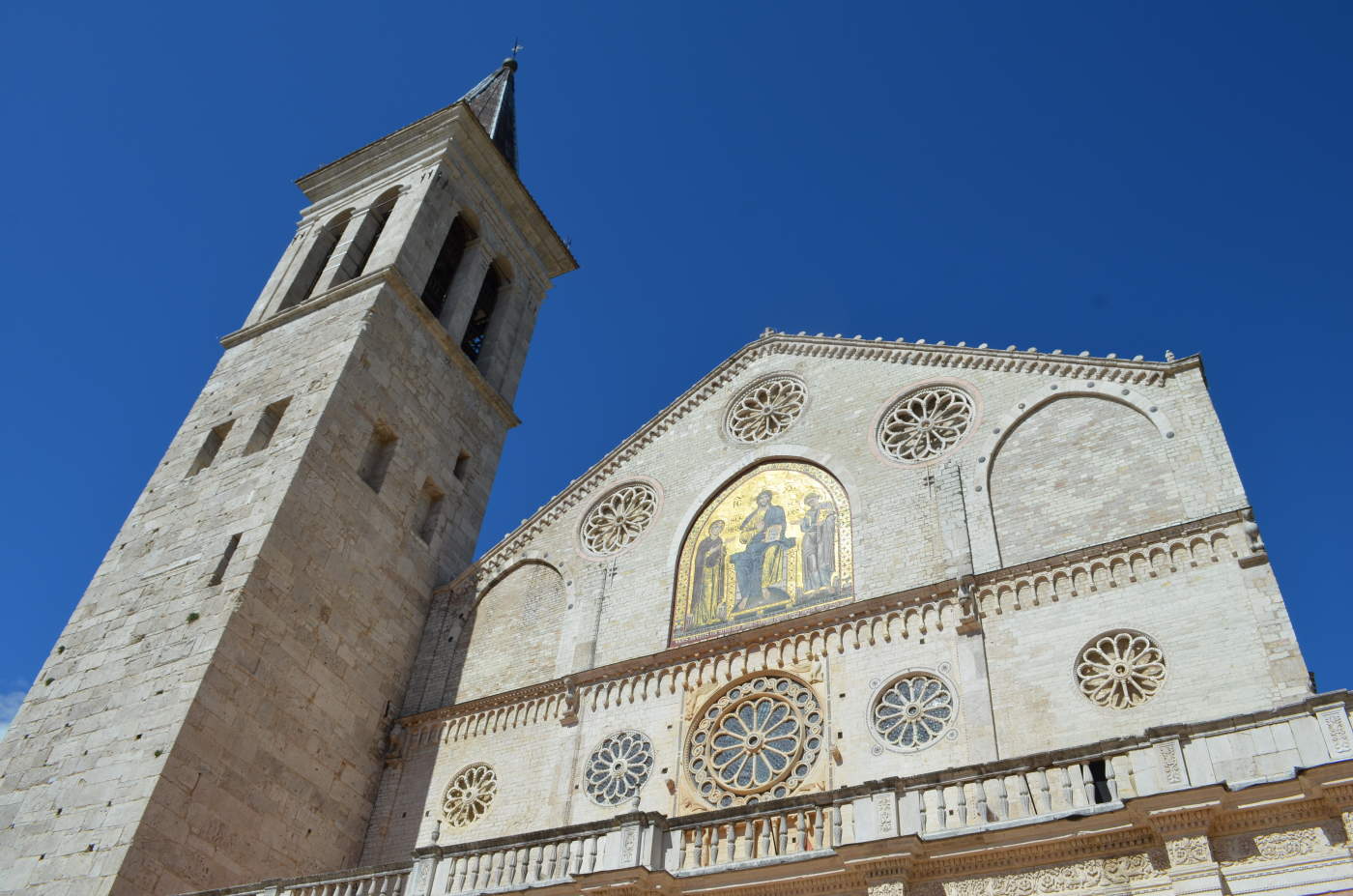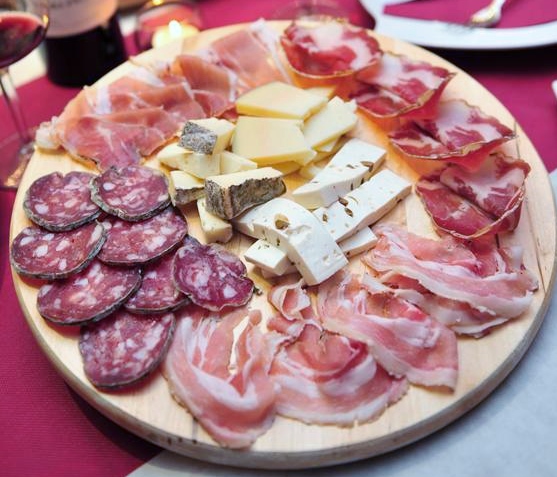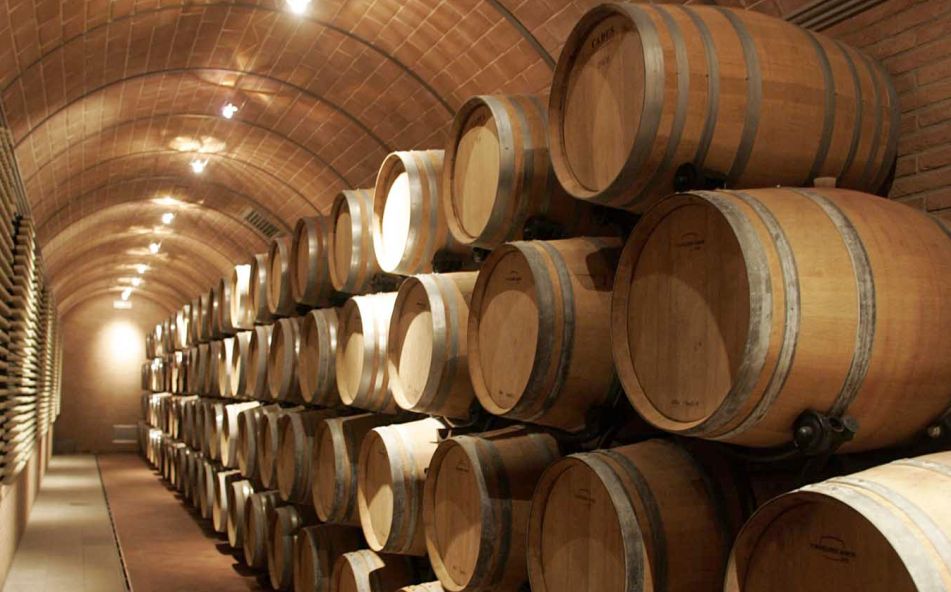Travel program
Umbria is not only a land of art, mysticism and culture but also a land producing great wines. Favoured by a particularly temperate climate, it is remarkably suitable for viticulture. This itinerary lets the visitor discover the territories of Perugia, Assisi, Torgiano, Todi , Montefalco and Spoleto and aims to represent the delightful combination of atmosphere, colours, art, nature and traditions of the most typical areas of Umbria and the harmony of their wines and gastronomy. The proposed itinerary will reveal the places where great wines are produced and where the real traditional local gastronomy can still be enjoyed.
Day 1: Perugia
Arrival at the airport and transfer to hotel in Perugia for dinner and overnight stay.
Day 2: Perugia
Guided tour in the morning of the historic centre of the regional capital and largest city of Umbria, characterized by the variety and beauty of its ancient, medieval monuments.
Free for lunch. Visit in the afternoon to the vineyards and wine cellars in the hills surrounding the town where the Colli Perugini doc wine is produced from the local Greghetto, Trebbiano and Sangiovese grapes. The visit also includes a demonstration of all the stages of production and wine tasting, accompanied with local salami and cheese.
Return to the hotel for dinner and overnight stay.
Day 3: Torgiano – Deruta
Breakfast at the hotel. After breakfast, transfer to Torgiano, the fortified town situated in the middle of the Tiber valley which still preserves its typical medieval appearance and the remains of its ancient walls. Torgiano is one of the most important centres for winemaking in central Italy and its archaeological finds show that the cultivation of grapes was an ancient art. Nowadays its Torre di Giano (white) and Rubesco (red) are appreciated all over the world. The visit of Torgiano starts with Palazzo Graziani-Baglioni that houses the Wine Museum, a very important collection representing the history of viticulture and wine making in Umbria. It continues with a visit to the museum dedicated to olive oil, illustrated through displays depicting its history and analysing its many qualities.
Lunch at restaurant with Torgiano DOC wine.
Move to Deruta in the afternoon, a small town known for its works of art and long tradition of manufacturing beautiful ceramics, conserved in the world’s most famous museums, and visit to a workshop for a detailed description of all phases of the process involved in making ceramics by hand, from the creation of the models to the removal of the pieces from the kiln. Then return to hotel in Perugia for dinner and overnight stay.
Day 4: Assisi
After breakfast, transfer to Assisi for a guided tour. The pink stone town of Assisi is the home of Umbrian mysticism. The outstanding figures of the two local saints, Francis and Clare, intertwine with the artworks of the most famous painters of the Middle Ages. The tour will include St Clare’s Basilica, where the Saint is buried, Piazza del Comune with its People’s Tower, the Minerva Temple, an interesting, sacred Roman construction and the finds of a large Roman public area below the square. St Francis’ Basilica, built upon the Saint’s tomb, is the centre of Franciscan spirituality and the cradle of medieval European art. The double papal Basilica was founded by Pope Gregory IX and is an architectural masterpiece containing some of the finest paintings of medieval Italian art, with works by Cimabue, Giotto, Simone Martini and Pietro Lorenzetti. In addition, a visit to the Hermitage and the church of San Damiano can be arranged by minibus. The programme also includes a visit to a vineyard with tasting of doc wine of Assisi (grechetto bianco, rosso and rosato). Return to hotel for dinner and overnight stay.
Day 5: Todi
After breakfast, transfer to Todi, another important centre along the “Strada del Cantico” and a fascinating old town, located in a delightful panoramic position on a hill in the central area of Umbria.
It is the home of Jacopone, the great mystic and poet of the 13th century and remarkable figure of the Franciscan order and Italian literature. Todi offers a number of interesting, well preserved medieval buildings which are rich in history, like the Church of Santa Maria della Consolazione, a majestic, domed church dating back to the 16th century, on a Greek-cross plan, influenced by Bramante and the most significant monument in Umbrian Renaissance architecture. The Church of S.Fortunato is a rare and beautiful example of a German-style, late Gothic hall church. The main square is bordered by three balanced and well-proportioned Gothic buildings and the Duomo, which reveals in its interior the unfolding of history throughout the centuries. At the end of the visit, transfer to a farmhouse for a typical lunch.
After lunch, return to Perugia for leisure time and individual activities.
Dinner and overnight stay at hotel.
Day 6: Montefalco and Spoleto
Breakfast in hotel and transfer to Montefalco. The city of Montefalco is the centre of an area of great importance for high quality wine making, dating back to the Roman era. It is here and in the surrounding area that a fine table wine is produced which was once used by friars for religious services, leading to the name Sagrantino, similar to the Italian word for sacraments. This is where, along the food and wine itinerary of the Sagrantino Road, people can experience emotions that only a great wine could offer. It was awarded the DOCG (Montefalco Sagrantino) certification in 1992. After the guided tour of the town, transfer to a local wine producer for lunch in a farm and Sagrantino wine.
In the afternoon transfer to Spoleto. The town is situated in a strategic position overlooking the ancient “Via Flaminia”. The splendour of its Romanesque churches and the Umbrian-Roman remains attract many visitors.
Visit to Spoleto and the Albornoz Fortes, an imposing military fortress and papal residence above the Flaminia road, Ponte delle Torri, a powerful 14thcentury structure used both as aqueduct and walkway, admired by the German poet Goethe, and the Cathedral, a masterpiece of Romanesque art with its ornate rose windows and beautiful Byzantine mosaic on the façade and the small chapel (Eroli) frescoed by Pinturicchio in its interior. The city tour also includes the Roman Theatre, where the Spoleto festival is occasionally held. The triumphal Arco di Druso and the medieval Church of St Ansano, built upon a Roman temple and an early Christian crypt of St.Isaac, complete the tour of the city. At the end of the visit, return to Perugia for dinner and overnight stay in hotel.
Day 7: Cooking Class and Olive Oil
This day is entirely dedicated to food and wine. Tranfer in the morning to a farm house for a cookery class in which a local chef will involve the participants in the preparation of typical Umbrian dishes like home-made tagliatelle and gnocchi or the more international Bavarian cream, fresh fruit dessert or chocolate dessert with pine-nuts and biscuits. At the end of the lesson, wine & cheese tasting before lunch and the doc wines of the “Strada del Cantico”.
Move to another farmhouse in the afternoon to see the production process of extra–virgin olive oil and participation in a tour to taste different kinds of oils. Later, visit to an old stone oil mill of the 18th century situated close to the main house. The oil mill was used until the beginning of the century and is unique with its four wooden presses and large, well-preserved millstone, certainly one of the few that remain in the centre of Italy.
Day 8
After breakfast transfer to the airport for return flight.
For a customized quote and futher information contact us





